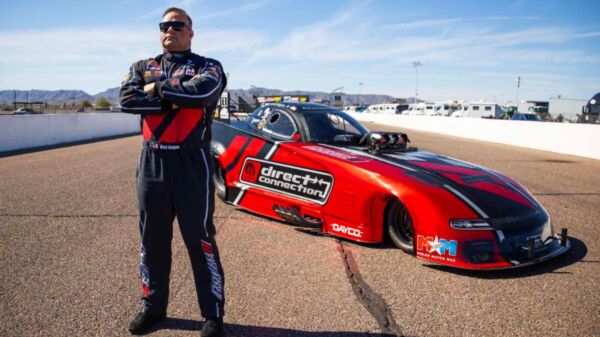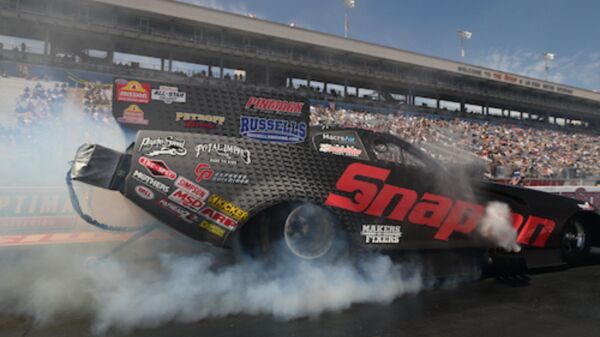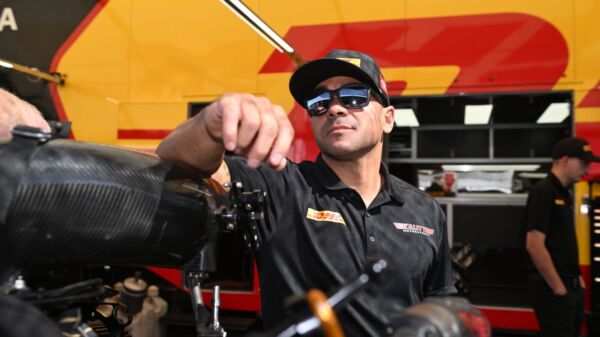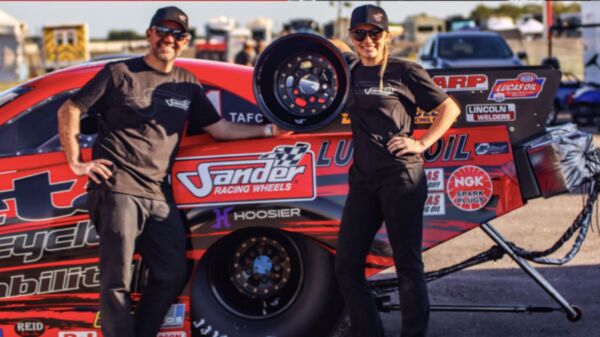It takes a unique set of skills, expertise and ingenuity to be a successful crew chief. There’s also a need for constant innovation, adding another necessary trait to the mix, but tuners must also be able to adjust on the fly. That’s especially true when working with a first-time driver.
The car might not change, but successful tuners must be able to tune to the characteristics and personalities of their drivers, something that’s absolutely necessary when bringing a newcomer into the class and sport.
In this story from the September 2021 Crew Chief Issue, Drag Illustrated talked with a trio of standout crew chiefs, with each offering their expertise in dramatically different classes. That presents its own unique set of challenges, but Jeff Pierce, Dave Connolly and Scott Palmer all discuss how they cater to rookie and new drivers and what’s important in helping them making a successful transition to their class.
Jeff Pierce

Pierce has established himself as a standout tuner in the Pro Mod and doorslammer ranks. Like every class, tuning a Pro Mod takes a special set of skills, especially if it’s working with a first-time or new driver. The explosive and aggressive nature of a Pro Mod is immediately taken into consideration, with Pierce noting the importance of slowly easing a driver into the massive power of Pro Mod. He’s done that to near-perfection with Joey Oksas and the results have been incredible in a short time.
First off, out of all the rookie drivers I’ve worked with, when it comes raw natural talent, he’s by far one of the best I’ve ever had. It’s been rather impressive. I’ve worked with some veteran drivers not from Pro Mod who raced in drag radial or Pro Stock, and in the beginning stages of Pro Mod, the process is still the same. The biggest thing for any of them is you’ve got to give them smooth, consistent race cars. It’s better to take them and give them something smooth and doesn’t shake the tires. They can learn about what you can drive and what you can’t, but first off you have to build that comfort level and confidence in the car.
They can become a better driver when you give them something they’re comfortable in. You put someone in a Pro Mod and it can be an intimidating car to drive.

With Joey, we started off very soft and we had to make sure he could drive the thing straight.
When he got put in, we got told two hours before we got to the track, so we were going through the car and resetting everything. Nothing in the car was the same, but we let him do a burnout and a 60-foot launch. We made a couple adjustments and then it was just a building confidence thing. The first full pass was in the 3.90s and it was a fairly soft pass, but every race we tried to make progression. You learn more about the car with him in and within 2-3 races, I was pretty comfortable with him in it. He can tell me when something doesn’t feel right. His ears are always open and he wasn’t scared to ask questions.
There are times where new drivers are feeling something and think it might be a problem and I have to show them it’s normal. Other times, we did find something. Some drivers have a good knack and feel for these things and it’s good to have that communication and talk about it with them. The biggest thing I’ll look for is consistency and calmness in the race car. You can tell if a driver is calm or not based on burnout and how he does the staging process. Usually right then, you get a good feel for how they’ll be as a driver.
With a new driver, I’ll talk as softly as I can and try to be calm. If I can keep them calm, they have more success. If you have new drivers that are open and want you to tell them if they’re doing something wrong, it’s an enjoyable experience. If you take a rookie team and the first time they go a 3.90, which is nothing in Pro Mod these days, he’s over the moon because he’s never been 3.90. They’re thrilled and then they can’t wait to drive again.
Dave Connolly

Connolly wasn’t about to call himself the Pro Stock whisperer for new drivers, but it’s hard to argue with what he’s been able to do with young drivers in a class that can be extremely difficult to master. He helped guide Erica Enders, Tanner Gray, Dallas Glenn and Kyle Koretsky to their first wins in the class in recent years, with Glenn and Koretsky picking up victories this year. Interestingly enough, Connolly keeps a laid-back approach with young drivers, letting them process things in their own time while they try to learn the numerous nuances of the class that can take years to master.
I’ve known Kyle for a lot of years, so it’s been interesting. He’s driven a lot of cars before he jumped into a Pro Stock car, so I didn’t really have to teach him a lot of the basics. He went through a spell where he was struggling a little on the tree and I’ve seen it with every driver. It’s just something you go through. I gave him my suggestions on it, but he had enough pressure, so I kind of laid back a little. I didn’t want to put any more pressure on him, so I try to take more of a laid-back approach, I guess.
You don’t want to put too much in their heads. Obviously, problems are going to occur, but they’re both very knowledgeable to what’s going on in a car. Dallas has been working on these things for so long he’s probably made thousands of runs in his head. It’s just small stuff and I’ll give my input when needed. They know when something’s wrong or if there’s an area that needs to be worked on. They’ll come ask the questions and I’ll give my answers from there.
I don’t know how I’ve gotten to that role where I’ve had a lot of new drivers, but it’s interesting to have been a part of it. Some ask lot of questions and some don’t, so I let them come to me with questions and I’ll give answers.
I’m a huge advocate of seat time. You learn by trial and error, and it’s the same thing with racing. I enjoy it, and Dallas and Kyle have gotten more competitive with each other. That will drive them to get better and I think it has. Dallas has shown he can let the clutch out with the best of them and Kyle has really been stepping up. Him watching Dallas has improved his game as well.
You just take everything you’ve learned and try to apply it, race smart and race to the best of your ability. To try to put any more pressure is not going to do you any good and you’re doing yourself more harm than good.
Scott Palmer
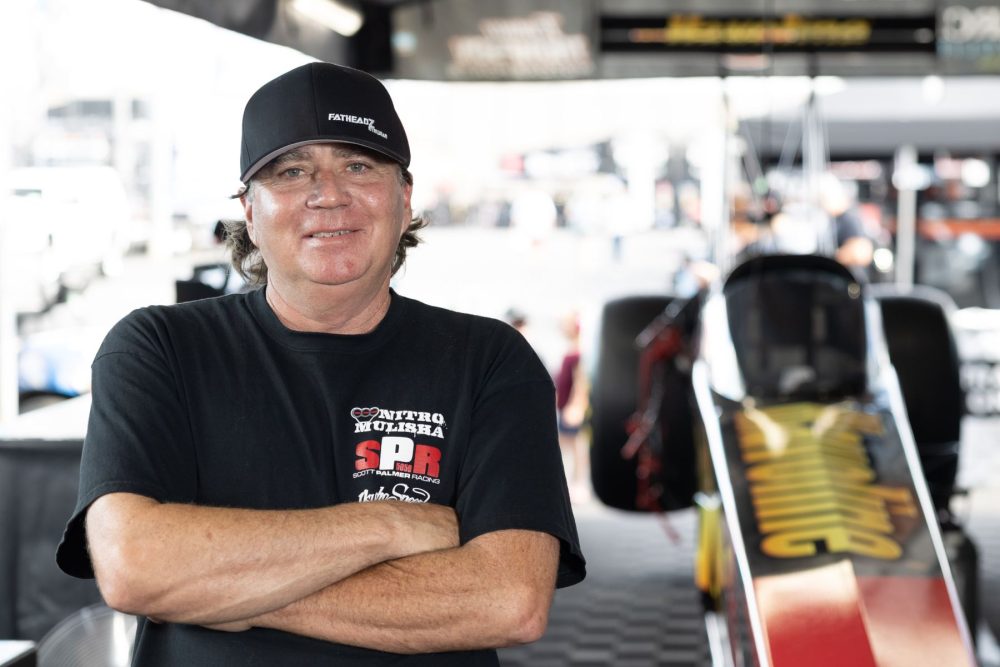
It’s a unique situation for Palmer, who is helping Alex Laughlin learn the ropes in Top Fuel for the first time. While this is all brand new for Laughlin, who has enjoyed a strong start to his nitro career, it’s also a first-time experience for Palmer. The longtime driver and tuner has spent plenty of time doing both in Top Fuel, but never before has he brought a newcomer into the class. It’s been an enjoyable experience for Palmer, as well as an eye-opening one.
This is the first time I’ve ever done anything like this. Me and Lee Calloway have done this for years, but we’ve been friends a long time and it wasn’t like he was a new driver. Alex went from Pro Stock to Top Fuel, so that was pretty exciting. The biggest problem I’ve had is I’ve done it so long by myself without anybody telling me what to do as far as driving, and I just assume everyone knows what to do and what the procedure is. He had been in a good A/Fuel car and ran similar situations, but I just took for granted using the clutch and small things you don’t think about.
I’ve been learning as I’ve gone, too. It’s been a lot of fun. He’s down to earth and it’s been a nice experience because he appreciates it so much. It took me 15 years to run 3.70s and we threw him in with the sharks. It was his fourth or fifth run and he ran in the 3.70s, but to know he respects the car, it makes it fun.
He’s driven enough stuff that he has a feel for it. When he let off in Topeka, he said he felt a little behind the car and I told him after a few more runs he’ll have a feel for it. Our whole team has been on this journey together.

For me, I feel like there’s less room for error because I’m only focused on tuning. I don’t have to worry about him because he knows what he’s doing, but I’ve got more time to focus on [the car], which I love. Don’t get me wrong, I still love to drive, but this is better for the team. It takes a couple people tuning these cars, and I was driving and tuning. I did talk to [the Capco team] about them because they give me a million dollars’ worth of knowledge.
It’s been a little bit of a relief, too, because I’m not driving as well as tuning. It’s really been a fun learning process for both of us, but we’ve just tried to reassure him that he’s been doing a great job and not worry about a lot of things.
He was a little concerned about reaction times and things like that, but we’re not worried about that right now. Think about it: he went 3.90s almost right off the bat, which is a huge deal, and then he goes 3.80s and that’s a big jump in a fuel car. Within five runs, he was going in the 3.70s and that’s another huge leap, so he’s going from 3.90s to 3.70s in a handful of runs. That’s a really big deal, so it’s just about getting comfortable and getting ahead of the car before you’re worrying about other things.
Photographs by Rick Belden, Cole Rokosky and Luke Nieuwhof


